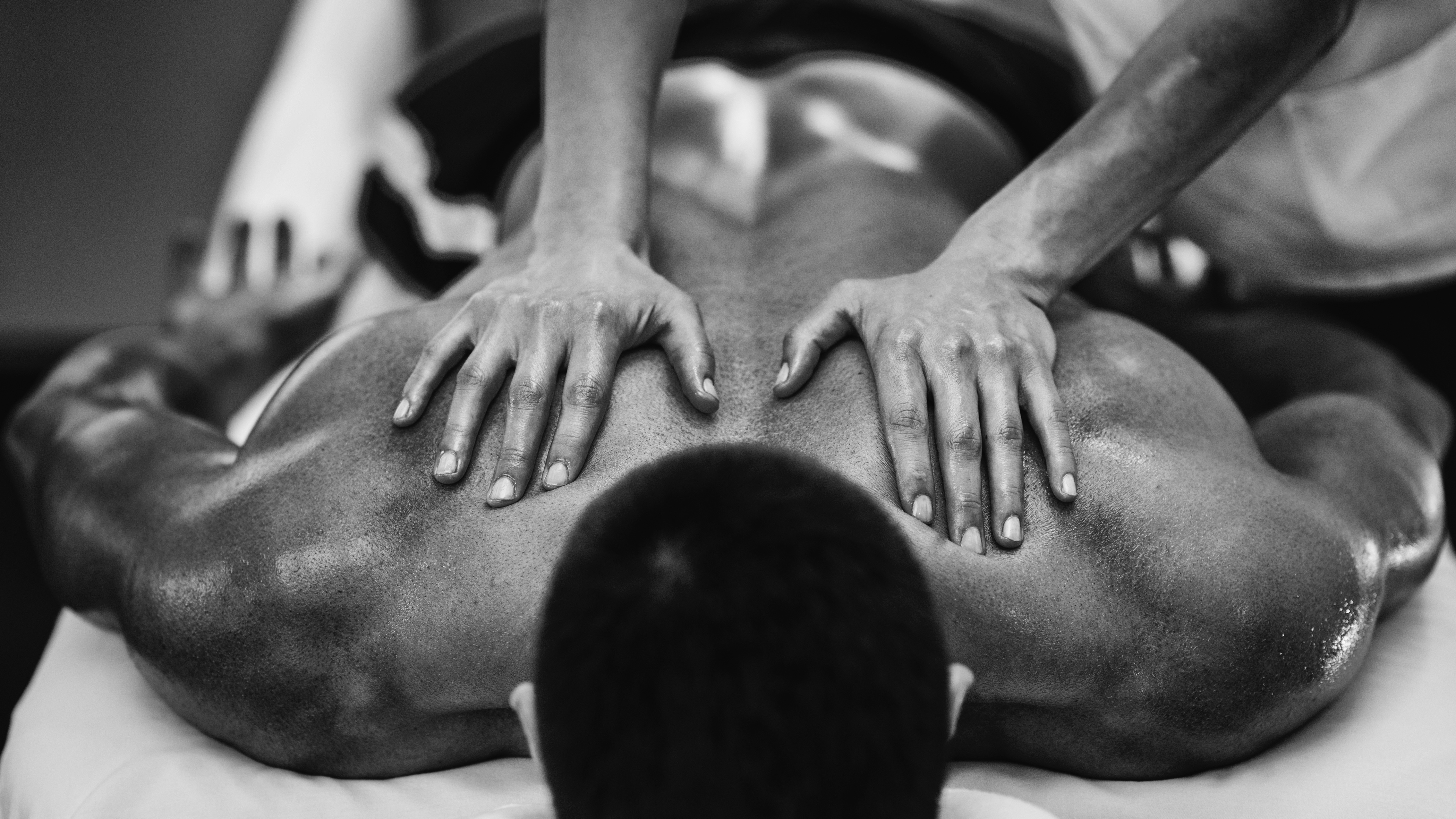What is Sports Massage, can it help treat and prevent sports injuries, and what do the qualification levels mean?
By Malcolm | 31st October 2018 |
Sports massages are normally advertised as being able identify and loosen areas of tightness helping to stop them developing into injuries.There are mixed opinions on the evidence of the effectiveness of sports massage[1][2]but there is evidence of the psychological benefits of massage[3]and advocates claim it can improve the recovery from injury by helping to relieve muscle tension, reduce soreness[4]and stress[5]. As such people who find sports massage beneficial tend to have them regularly, particularly pre and post event. Itis an area where regularitymayhelp. The more often you go to a sports massage therapist the more they can learn your body and know where to focus.

Sports massage is regulated on a voluntary basis rather than by legalstatute which means that the titlesports massage is not protected.It is thus worth checking the credentials of the person you are seeing to ensure they are a member of a reputable industry association such as the Sports Massage Association (SMA) or the Institute for Soft Tissue Therapists (ISRM).
What do the qualification levels mean?
Sports Massage qualifications range from a level 3 to 5 with 5 being the highest vocational sports massage qualification in the UK. Level 3 and 4 therapists are trained on massage for injury prevention and as part of preparing people for activities. A level 5 therapist is trained to provide management, manipulation and rehabilitation of injuries.
When qualifications are listed it often includes a 4 letter acronym before it such as BTEC level 5 sports massage. These letters describe the training body that provided the training. There are a number of key providers, such as the largest one BTEC, but also includes ITEC and VTCT. All have to use the same criteria when approving qualification levels and although people may have their preference they should be equivalent to each other.
Level 3- A level 3 therapist will have learnt the basics with a focus on preparing the body for sport, maintenance, and recovering from an event.
Level 4- A level 4 therapist has received more in depth training and understands the role posture plays, common syndromes, muscular imbalances, and treating common sports conditions.
Level 5 - A level 5 therapist builds on this training learning a wider range of sports conditions, understanding the role and impact of gait mechanics, the peripheral nervous system and a wider range of orthopaedic tests and assessment methods. They learn more about treatment planning and rehabilitation.
Paul Medlicott the Chair of the SMA says"The Sports Massage Association sets education standards for their members that help to ensure clients receive the most appropriate treatment for their personal requirements."
Mel Cash, chairman of the ISRM says “Regular sports massage as an integral part of a training programme should help you stay injury free and enhance your performance. However, if you sustain an injury it is better to see a therapist with a Level 5 qualification who is trained and insured to treat minor and chronic sports injuries. All ISRM registered therapists have this level of training.”
Find your nearest sports massage expert who specialises in your sport at sportsinjuryfix.com
[1]The role of massage in sports performance and rehabilitation: current evidence and future direction. N Am J Sports Phys Ther. 2008;3(1):7-21.
[2]Hemmings B, Smith M, Graydon J, et al Effects of massage on physiological restoration, perceived recovery, and repeated sports performance British Journal of Sports Medicine 2000;34:109-114.
[3]Hemmings B, Smith M, Graydon J, et al Effects of massage on physiological restoration, perceived recovery, and repeated sports performance British Journal of Sports Medicine 2000;34:109-114.
[4]Hilbert JE, Sforzo GA, Swensen T The effects of massage on delayed onset muscle soreness British Journal of Sports Medicine 2003;37:72-75.
[5]The role of massage in sports performance and rehabilitation: current evidence and future direction. N Am J Sports Phys Ther. 2008;3(1):7-21.
